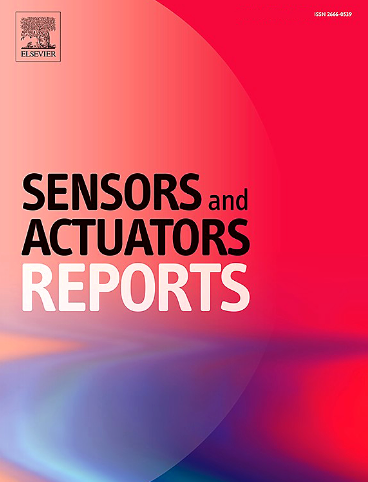SARS-COV-2 viral RNA detection through oligonucleotide-capped nanoporous anodic alumina supports.
IF 7.6
Q1 BIOTECHNOLOGY & APPLIED MICROBIOLOGY
引用次数: 0
Abstract
We describe herein a sensor containing nanoporous anodic alumina (NAA) as sensing platform to identify SARS-COV-2 RNA using a gating mechanism. The system is based on NAA that contains a fluorescent dye (Rhodamine B; RhB) and is capped with an oligonucleotide sequence that hybridize specifically a region of SARS-CoV-2 genome. In the presence of RNA from SARS-COV-2 virus, the oligonucleotide of the surface is displaced, uncapping the pores, and producing a delivery of RhB. The detection of the virus is achieved measuring the fluorescence of the fluorophore. The nanosensor demonstrates to be highly sensitive and selective in aqueous buffers and in biological media, having a limit of detection (LOD) of 50 ± 30 copies mL-1 of SARS-CoV-2 RNA extracted from patients. Moreover, preliminary results using 18 real nasopharyngeal swab samples indicate the potential of the system to differentiate between infected and non-infected patients. Compared to the conventional RT-PCR method, in our system there is no need for sample pretreatment or RNA isolation, providing diagnostic outcomes within 60 mins while maintaining a high level of reliability.

利用寡核苷酸覆盖纳米多孔阳极氧化铝载体检测SARS-COV-2病毒RNA。
本文描述了一种含有纳米多孔阳极氧化铝(NAA)的传感器作为传感平台,利用门控机制识别SARS-COV-2 RNA。该系统是基于NAA,其中含有一种荧光染料(罗丹明B;RhB),并被一个寡核苷酸序列盖住,该序列特异性地与SARS-CoV-2基因组的一个区域杂交。在来自SARS-COV-2病毒的RNA存在下,表面的寡核苷酸被移位,打开孔的盖子,并产生RhB的递送。病毒的检测是通过测量荧光团的荧光来实现的。该纳米传感器在水缓冲液和生物培养基中具有高度敏感性和选择性,检测限(LOD)为从患者身上提取的SARS-CoV-2 RNA 50±30拷贝mL-1。此外,使用18个真实鼻咽拭子样本的初步结果表明,该系统具有区分感染和非感染患者的潜力。与传统的RT-PCR方法相比,在我们的系统中不需要样品预处理或RNA分离,在保持高可靠性的同时在60分钟内提供诊断结果。
本文章由计算机程序翻译,如有差异,请以英文原文为准。
求助全文
约1分钟内获得全文
求助全文
来源期刊

Sensors and Actuators Reports
Multiple-
CiteScore
9.60
自引率
0.00%
发文量
60
审稿时长
49 days
期刊介绍:
Sensors and Actuators Reports is a peer-reviewed open access journal launched out from the Sensors and Actuators journal family. Sensors and Actuators Reports is dedicated to publishing new and original works in the field of all type of sensors and actuators, including bio-, chemical-, physical-, and nano- sensors and actuators, which demonstrates significant progress beyond the current state of the art. The journal regularly publishes original research papers, reviews, and short communications.
For research papers and short communications, the journal aims to publish the new and original work supported by experimental results and as such purely theoretical works are not accepted.
 求助内容:
求助内容: 应助结果提醒方式:
应助结果提醒方式:


